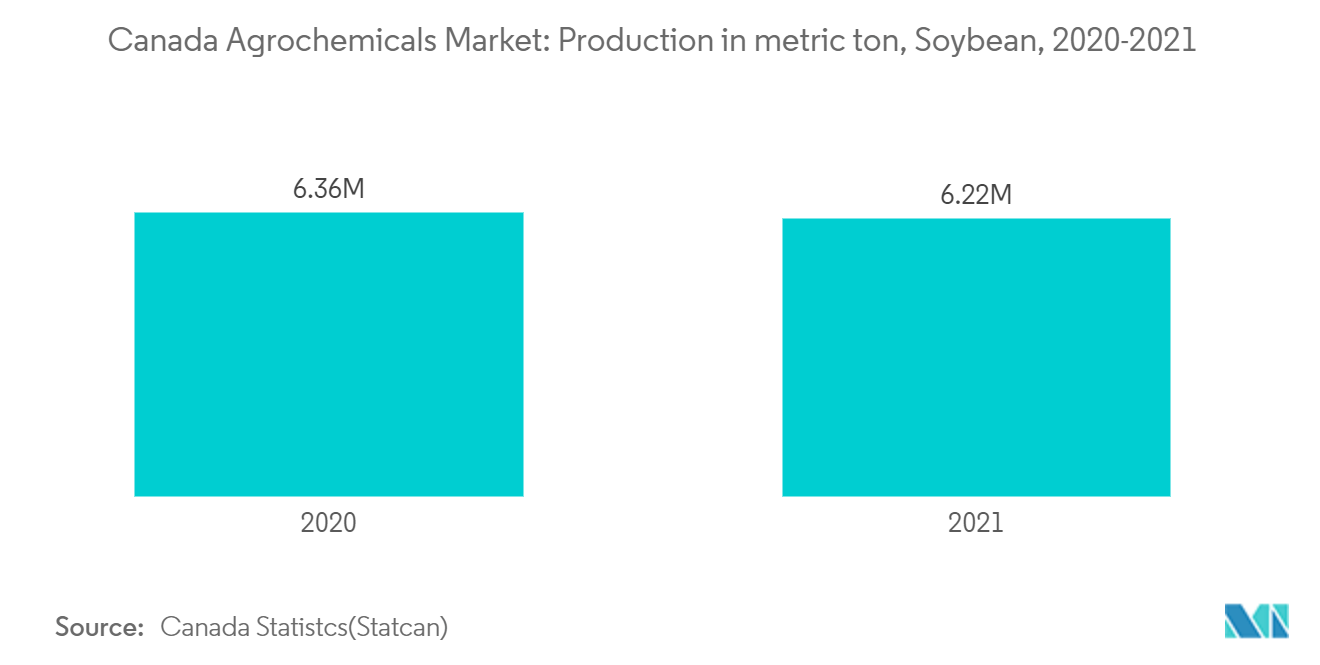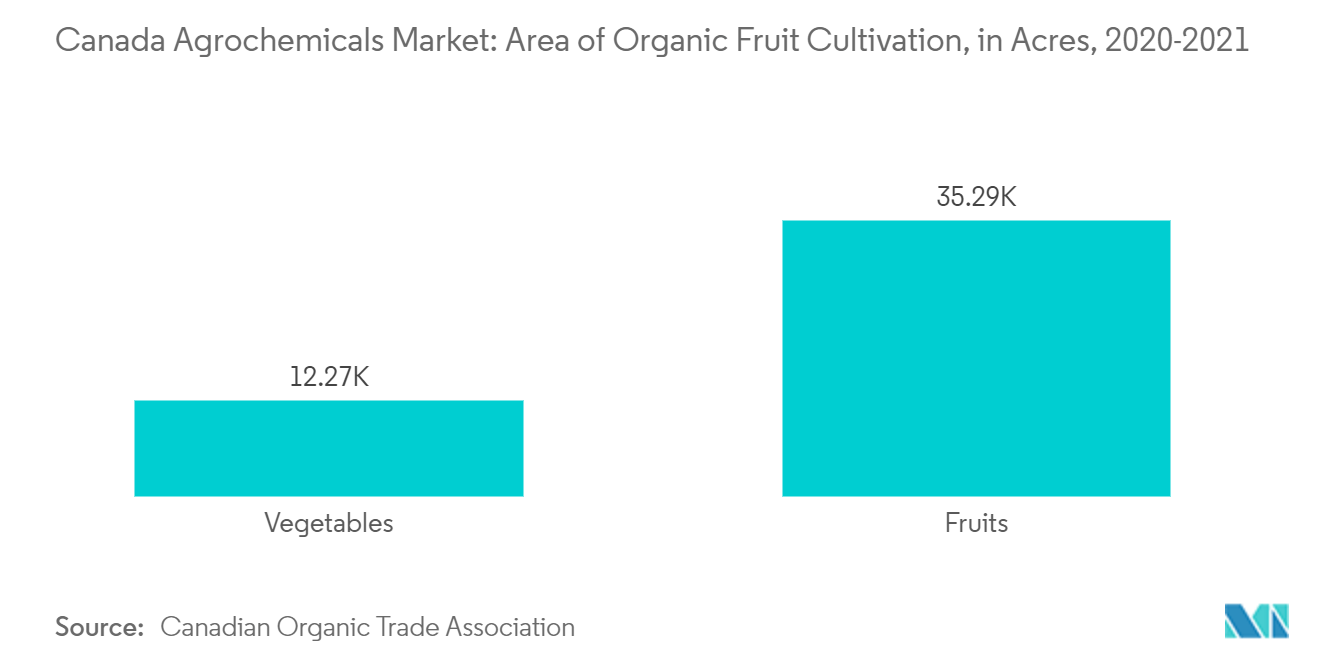Market Trends of Canada Agrochemicals Industry
Need for Improving Productivity by Limiting the Crop Damage
- The demand for pest management products is being driven by the emergence of new pests and diseases, leading to crop loss. Customers are increasingly looking for targeted and effective solutions to improve their yield. Thus, crop protection is a key strategy farmers adopt to limit crop damage and enhance productivity.
- According to the Food and Agriculture Organization (FAO), in 2018, soybeans production was 7.41 million metric tons, which gradually decreased to 6.22 million metric tons in 2021, mainly due to the infestation from two prominent pests, namely soybean aphids and two-spotted spider mites (TSSM). The pest incidence was mitigated through the wide application of pesticides, which helped in retrieving the crops.
- Market players are putting constant efforts into introducing advanced agrochemicals to enhance domestic crop production. For instance, in 2019, BASF launched a critical insecticide, Sefina, for use in Canadian soybeans and potatoes.
- There are rampant instances of crop damage due to disease incidence, causing enormous losses to economically important crops. This has created the need for new fungicide development and compelled farmers to adopt an intensified application of agrochemicals such as fungicides and insecticides, which is anticipated to increase the market during the forecast period.

Rising Adoption of Bio-based Agrochemicals
- Owing to the escalating demand for food safety and quality, biopesticides are gaining popularity over their synthetic counterparts. Although the prevalence of synthetic or chemical pesticides continues, an emerging preference for biological pesticides has been observed in recent years in the country primarily due to the rapid adoption of sustainable agricultural practices, such as integrated pest management (IPM) techniques and organic farming.
- According to Official Canada Government Statistics, in 2021, the organic cultivation area of fruits was 35,289 acres, and for vegetables, it was 12,268 acres which have been increasing steadily for a decade. Furthermore, growing consumer concern over food safety is driving the use of organic products, which leads to the use of biopesticides rather than chemicals. Canada's total organic food market was USD 4.4 billion in 2018, which rose to 4.9 billion in 2021.
- Because of industrious organic food producers and the organizations that assist them, the organic industry is one of Canada's fastest-growing sectors. Cooperation and partnership are critical to ensuring this industry grows to satisfy rising customer demand. The ongoing investments and activity in the organic market will likely benefit the bio-based agrochemical market.
- In March 2022, the Minister of Agriculture and Agri-Food (MAAF) invested USD 103,400 in the Organic Federation of Canada (OFC) to facilitate a new cooperation that will support the sustainability and expansion of Canada's organics business.

